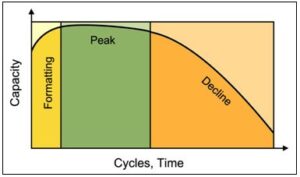Looking for the right battery charger to power up your devices? Wondering, “How many amp battery charger do I need?” Well, worry no more! In this article, we’ll guide you through the process of determining the perfect amperage for your battery charger, ensuring optimal performance and longevity for your batteries. So, let’s dive right in and find out the answer to the burning question: “How many amp battery charger do I need?”
How Many Amp Battery Charger Do I Need?
When it comes to charging your batteries, you want to make sure you have the right equipment for the job. One important factor to consider is the amperage of the battery charger. The amperage rating determines how quickly the charger can replenish the charge in your battery. However, choosing the right amp battery charger can be a bit confusing if you are not familiar with the technical aspects. In this article, we will explore the factors that should be taken into consideration when determining how many amps your battery charger needs to be.
Determining the Amp Hour (Ah) Rating of Your Battery
Before we delve into the world of amp battery chargers, it is crucial to first understand the amp hour (Ah) rating of your battery. Amp hour rating refers to the amount of charge a battery can deliver over a specified period. It is essentially a measure of the battery’s capacity. This rating is often marked on the battery label as “Ah” or a similar designation.
To determine the Ah rating of your battery, you can check the manufacturer’s label or do a quick online search using the battery model number. Once you have the Ah rating, you can proceed to calculate the appropriate amperage for your battery charger.
Calculating the Ideal Amperage for Your Battery Charger
The ideal amperage for your battery charger depends on the Ah rating of your battery and the time you have available to charge it. The general rule of thumb is to choose a charger that can deliver around 10-20% of the battery’s Ah rating.
Here is a step-by-step process to calculate the ideal amperage:
- Multiply the Ah rating of your battery by 10% to get the lower limit of the charger amperage.
- Multiply the Ah rating of your battery by 20% to get the upper limit of the charger amperage.
For example, if you have a 100Ah battery:
- Lower limit: 100Ah x 0.1 = 10 amps
- Upper limit: 100Ah x 0.2 = 20 amps
Therefore, a battery charger with an amperage between 10 and 20 amps would be ideal for this battery.
Considerations for Choosing the Right Amperage
While the 10-20% rule provides a good starting point, there are additional factors you should consider when determining the amperage of your battery charger:
Battery Condition
If your battery is severely discharged or in poor condition, it may require a higher amperage to charge efficiently. In such cases, you might need a charger with a higher amperage, closer to the upper limit of the range calculated earlier.
Charging Time
The charging time can also influence the choice of amperage. If you have limited time available, a higher amperage charger can replenish the battery charge more quickly. However, keep in mind that fast charging may shorten the overall lifespan of the battery.
Type of Battery
Different battery types require different charging characteristics. Lead-acid batteries, for example, are generally charged at a lower amperage than lithium-ion batteries. Check the battery manufacturer’s recommendations for the appropriate charging amperage based on the battery chemistry.
Charger Versatility
Consider the versatility of the charger. It is often beneficial to have a charger with adjustable amperage settings. This allows you to use the same charger for a variety of batteries with different Ah ratings.
Tips for Using Your Battery Charger
Now that you have determined the ideal amperage for your battery charger, here are some additional tips to ensure efficient and safe charging:
- Always follow the manufacturer’s instructions for your specific battery charger.
- Ensure the charger is compatible with the battery type you are charging.
- Connect the charger correctly, following the polarity indicated on the battery terminals.
- Provide proper ventilation during the charging process to prevent overheating.
- Monitor the charging progress and disconnect the charger once the battery is fully charged to avoid overcharging.
- Regularly inspect the battery and charger for any signs of damage or wear.
By following these tips, you can safely and effectively charge your batteries, extending their lifespan and ensuring they are always ready for use when you need them.
Frequently Asked Questions
What factors should I consider when determining the amp battery charger I need?
When determining the appropriate amp battery charger for your needs, you should consider the battery size, the charging time you desire, and the charger’s compatibility with your specific battery type. These factors will help you choose the right amp rating for your battery charger.
How do I determine the amp rating of my battery charger?
To determine the amp rating of your battery charger, you can check the specifications provided by the manufacturer. The amp rating is usually mentioned on the charger itself or in the product manual. If you cannot find this information, you can contact the manufacturer directly for assistance.
Can I use a higher amp battery charger than recommended for my battery?
It is generally not recommended to use a higher amp battery charger than what is recommended for your battery. Charging your battery with a higher amp charger may lead to overcharging, which can damage the battery and reduce its lifespan. It is always best to adhere to the manufacturer’s guidelines.
What happens if I use a lower amp battery charger than recommended?
Using a lower amp battery charger than recommended may result in slower charging times. The lower amp charger may not be able to supply enough current to charge your battery efficiently. In some cases, it may not even be capable of fully charging the battery. Therefore, it is important to use a charger with the recommended amp rating for optimal charging performance.
How do I calculate the charging time with a specific amp battery charger?
The charging time will depend on the battery’s capacity and the amp rating of the charger. To estimate the charging time, you can use the formula: Charging Time (in hours) = Battery Capacity (in amp-hours) / Charger Amp Rating. Keep in mind that this calculation provides an approximate time and actual charging times may vary.
Are there any safety precautions I should take when using a battery charger?
Yes, it is important to follow certain safety precautions when using a battery charger. Make sure to read and follow the manufacturer’s instructions carefully. Avoid charging batteries in close proximity to flammable materials. Do not leave the charger unattended for extended periods. Additionally, always use a charger that is compatible with your battery type to ensure optimal charging and safety.
Final Thoughts
When determining how many amp battery charger you need, it’s important to consider the battery size and charging speed required. A general rule of thumb is to choose a charger with amp ratings between 10-30% of the battery’s amp-hour capacity. This ensures efficient charging while avoiding potential damage. For example, a 100Ah battery would benefit from a 10-30 amp charger. However, it’s always recommended to consult the battery manufacturer’s recommendations for more specific requirements. By selecting the right amp battery charger, you can effectively and safely charge your batteries for optimal performance.



